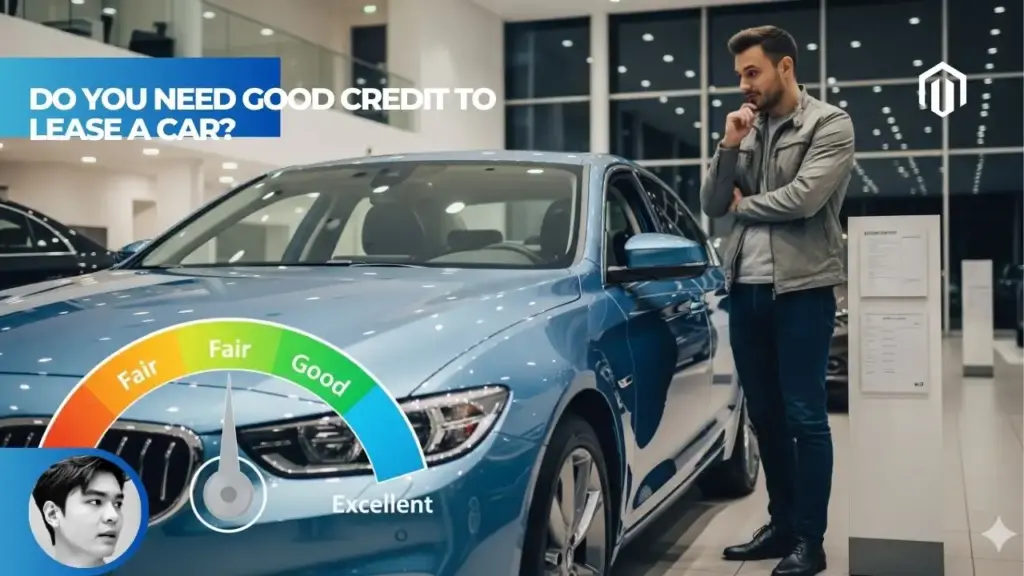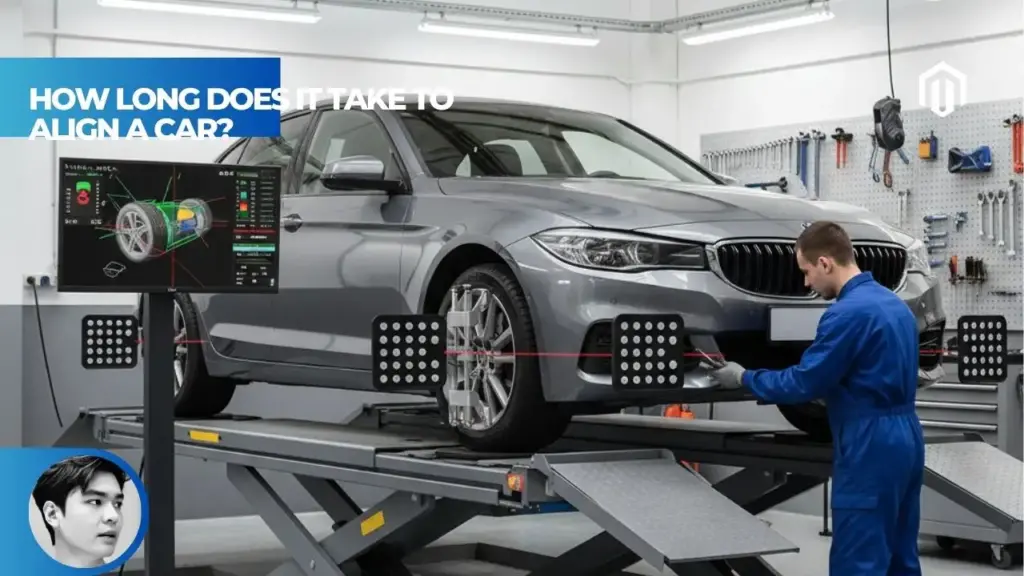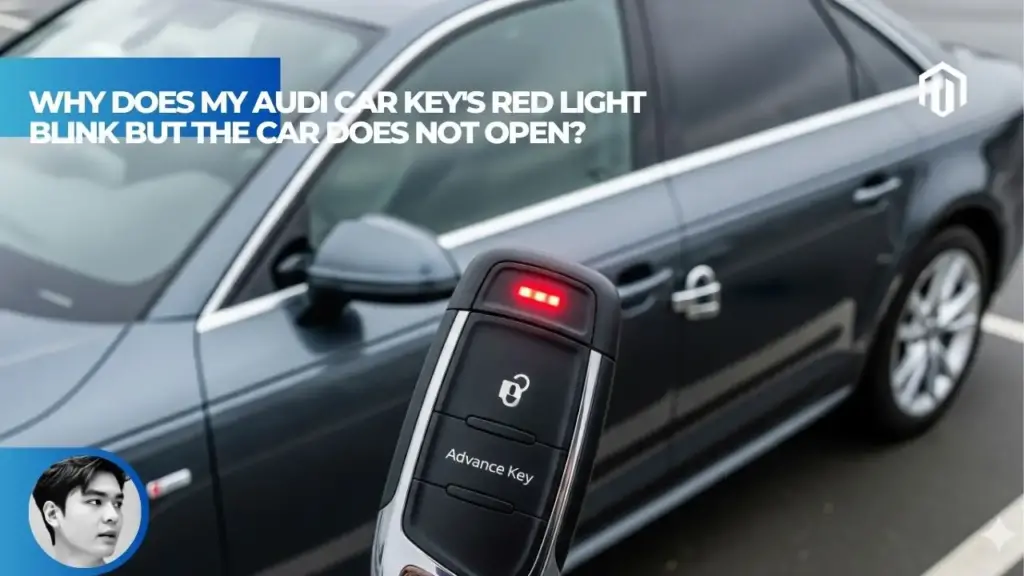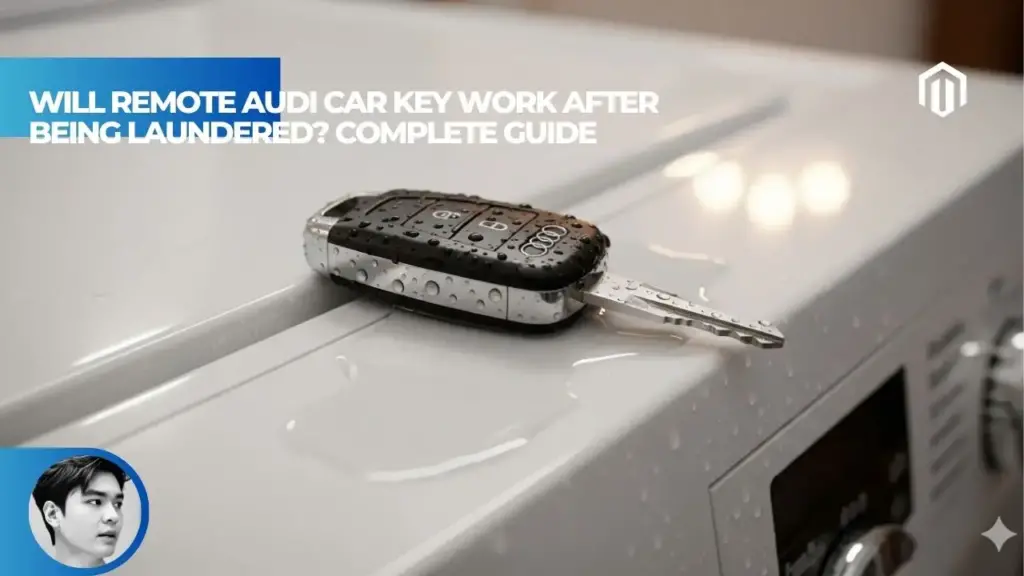You may also like:
You generally need a credit score of 670 or higher to lease a car, with the average lessee having a 753 credit score in 2025, though it’s still possible to lease with lower scores by accepting higher costs and stricter terms. Leasing companies view credit scores as risk indicators, requiring better credit than auto loans since you’re essentially renting their asset without building equity.

Credit Score Requirements for Car Leasing
Understanding credit requirements helps set realistic expectations before visiting dealerships. The leasing landscape has evolved significantly, with average credit scores for new leases reaching 753 in Q1 2025, according to Experian’s automotive finance data[1].
Minimum Credit Score to Lease a Car
While no universal minimum exists, most dealerships prefer applicants with FICO scores of 670 or higher, considered “good” credit. This threshold represents the point where approval becomes likely, though terms may not be optimal. Below this level, approval rates drop significantly, with only 14% of new leases going to borrowers with scores between 501-660[2].
The variation in requirements stems from different risk tolerances among leasing companies. Captive lenders—manufacturers’ financing arms like BMW Financial Services or Audi Financial—sometimes offer more flexibility to move inventory. Independent banks typically maintain stricter standards, particularly for luxury vehicles.
What Credit Score is Needed for a Lease
Credit score requirements vary by vehicle class and lease terms:
| Vehicle Type | Typical Minimum Score | Ideal Score for Best Terms |
|---|---|---|
| Economy Cars | 620-650 | 700+ |
| Mainstream Brands | 650-680 | 720+ |
| Luxury Vehicles | 700+ | 750+ |
| Super Luxury/Exotic | 750+ | 800+ |
These thresholds reflect general industry practices, though individual dealers may deviate based on inventory levels and manufacturer incentives.
FICO Score Needed for Leasing
Dealers primarily use FICO Auto Scores, specialized versions ranging from 250-900 rather than standard 300-850 FICO scores. These auto-specific scores weigh vehicle-related credit history more heavily, potentially helping or hurting depending on your auto loan payment history. A strong record of on-time car payments can boost your Auto Score above your generic FICO score.
Most lessors pull scores from all three credit bureaus—Experian, Equifax, and TransUnion—using either the middle score or lowest score for decision-making. This practice means maintaining good credit across all bureaus proves essential.
What is Tier 1 Credit for a Car Lease
Tier 1 credit, also called “super prime,” represents the gold standard for lease qualification. These borrowers receive manufacturers’ advertised specials, lowest money factors, and maximum flexibility in negotiations. According to Autvex analysis, 48.35% of all leases go to Tier 1 borrowers[1].
Tier 1 typically requires:
- FICO Auto Score of 720-740+
- Stable employment history (2+ years)
- Debt-to-income ratio below 40%
- No recent bankruptcies or repossessions
- Strong payment history on previous auto loans
700 Credit Score to Lease a Car
A 700 credit score places you at the Tier 1 threshold with most mainstream brands, though luxury marques might classify this as Tier 2. With this score, expect:
- Approval for most non-exotic vehicles
- Money factors 0.5-1% above best advertised rates
- Possible small down payment requirements ($500-1,000)
- Access to manufacturer lease specials with conditions
At 700, you’re positioned well for standard leases but might miss ultra-low promotional rates reserved for 740+ scores. Consider waiting a few months to improve your score if you’re close to the next tier.
800 Credit Score Car Lease Benefits
An 800+ credit score unlocks maximum benefits, placing you among the top 20% of consumers. Advantages include:
- Lowest possible money factors (often matching promotional rates)
- Zero down payment options on most vehicles
- Multiple lease approvals for household members
- Waived acquisition fees at some dealers
- Ability to lease high-value vehicles ($100,000+)
- Negotiating leverage for better terms
With exceptional credit, lessors compete for your business, potentially offering below-market rates to establish banking relationships.
Credit Tiers and Lease Approval Likelihood
Understanding how lenders categorize credit helps predict approval chances and available terms.
Credit Score to Get Best Lease Deals
The best lease deals—those advertised in commercials with impossibly low payments—typically require FICO scores of 750 or higher. These promotions often stack multiple incentives:
- Manufacturer subvention (subsidized rates)
- Conquest bonuses for switching brands
- Loyalty rewards for repeat customers
- Regional promotional money
Without excellent credit, accessing these stacked incentives becomes impossible, dramatically increasing monthly payments.
What Credit Bureau Do Car Leasing Companies Use
Most lessors pull tri-merge reports showing all three bureaus, though practices vary:
- Experian: Most commonly used, especially by captive lenders
- Equifax: Preferred by some regional banks
- TransUnion: Often pulled for subprime applications
Some dealers use “soft pulls” for pre-qualification, switching to hard inquiries only after tentative approval. Multiple auto inquiries within 14-45 days typically count as single inquiries for scoring purposes, enabling rate shopping without excessive score damage.
Lease Approval by Credit Score Range
Experian’s Q1 2025 data reveals approval distribution across credit tiers[1]:
| Credit Tier | Score Range | % of Leases | Typical Terms |
|---|---|---|---|
| Super Prime | 720+ | 48.35% | Best rates, minimal down |
| Prime | 660-719 | 37.74% | Slightly higher rates |
| Near Prime | 620-659 | 9.93% | Higher rates, down payment required |
| Subprime | 580-619 | 3.68% | Significant premiums, large down payment |
| Deep Subprime | <580 | 0.30% | Rarely approved, extreme terms |
Lease Approval with Fair Credit (620-669)
Fair credit lessees face challenges but aren’t excluded entirely. With scores in this range, expect:
- Money factors 2-3x higher than prime rates
- Required down payments of $2,000-4,000
- Limited vehicle selection (often older model years)
- Shorter lease terms (24-36 months maximum)
- Possible mileage restrictions below standard 10,000/year
Success strategies include targeting high-inventory models, leasing during model year-end clearances, and considering certified pre-owned leases where available.
Subprime Car Lease Options (Below 620)
Subprime leasing remains possible but rarely makes financial sense. Only 3.98% of leases go to borrowers below 620[1]. Challenges include:
- Money factors equivalent to 15-25% APR
- Down payments approaching 20-30% of vehicle value
- Security deposits equal to multiple monthly payments
- Mandatory GAP insurance at inflated rates
- Extremely limited model selection
At this credit level, buying a used vehicle with financing typically proves more economical than leasing.
Leasing with Bad Credit Challenges
Bad credit doesn’t completely preclude leasing, but it transforms the economics and experience significantly.
Can I Lease a Car with Bad Credit
Yes, but expect substantial compromises. Dealers specializing in subprime leasing exist, though their practices vary widely. According to industry data, approximately 14% of new leases go to borrowers with scores below 660[2]. Success requires:
- Proof of stable income (3-6 months of pay stubs)
- References from current creditors
- Explanation letters for credit issues
- Flexibility on vehicle choice
- Patience with the approval process
Leasing a Car with a 600 Credit Score
A 600 score sits at the subprime boundary, where approval becomes possible but expensive. Real-world scenarios with 600 credit:
Example: 2024 Honda Civic LX
- MSRP: $25,000
- Standard lease (750 credit): $289/month, $0 down
- 600 credit lease: $385/month, $3,000 down
- Additional costs: Two security deposits, higher insurance
The $96 monthly premium plus upfront costs mean paying approximately $6,500 more over 36 months—money that could purchase the vehicle outright after several years.
Leasing a Car with a 550 Credit Score
At 550, traditional leasing becomes nearly impossible. The 0.30% of leases to deep subprime borrowers typically involve:
- Captive lenders moving slow-selling inventory
- Lease-here-pay-here dealerships with predatory terms
- Corporate fleet deals with employer co-signing
When approved, expect money factors exceeding 0.0100 (24% APR equivalent), making total lease costs approach or exceed purchase prices.
Bad Credit Leasing Companies
Certain lenders specialize in challenged credit, though terms remain unfavorable:
- Ally Financial: Considers 600+ with strong income
- Capital One Auto Finance: Limited lease programs for 620+
- Santander Consumer USA: Subprime specialist, high rates
- Exeter Finance: Deep subprime, extremely high costs
- Carvana: Doesn’t lease but offers alternatives
Autvex experts recommend avoiding “guaranteed approval” advertisements, which typically indicate predatory lending practices.
No Credit Check Car Lease Options
True no-credit-check leases don’t exist from legitimate dealers. Claims otherwise indicate:
- Lease-to-own schemes with inflated prices
- Buy-here-pay-here lots misrepresenting sales as leases
- Scams targeting desperate consumers
All legitimate leases require credit verification for legal and risk management purposes.
Lease Application Denied – What’s Next
Denial isn’t permanent. After rejection:
- Request specific reasons (required under Fair Credit Reporting Act)
- Review credit reports for errors (dispute inaccuracies immediately)
- Address noted deficiencies (pay down debts, establish payment history)
- Wait 3-6 months before reapplying
- Consider alternative transportation meanwhile
Some dealers offer “second chance” programs after demonstrating improvement, particularly if initial denial was borderline.
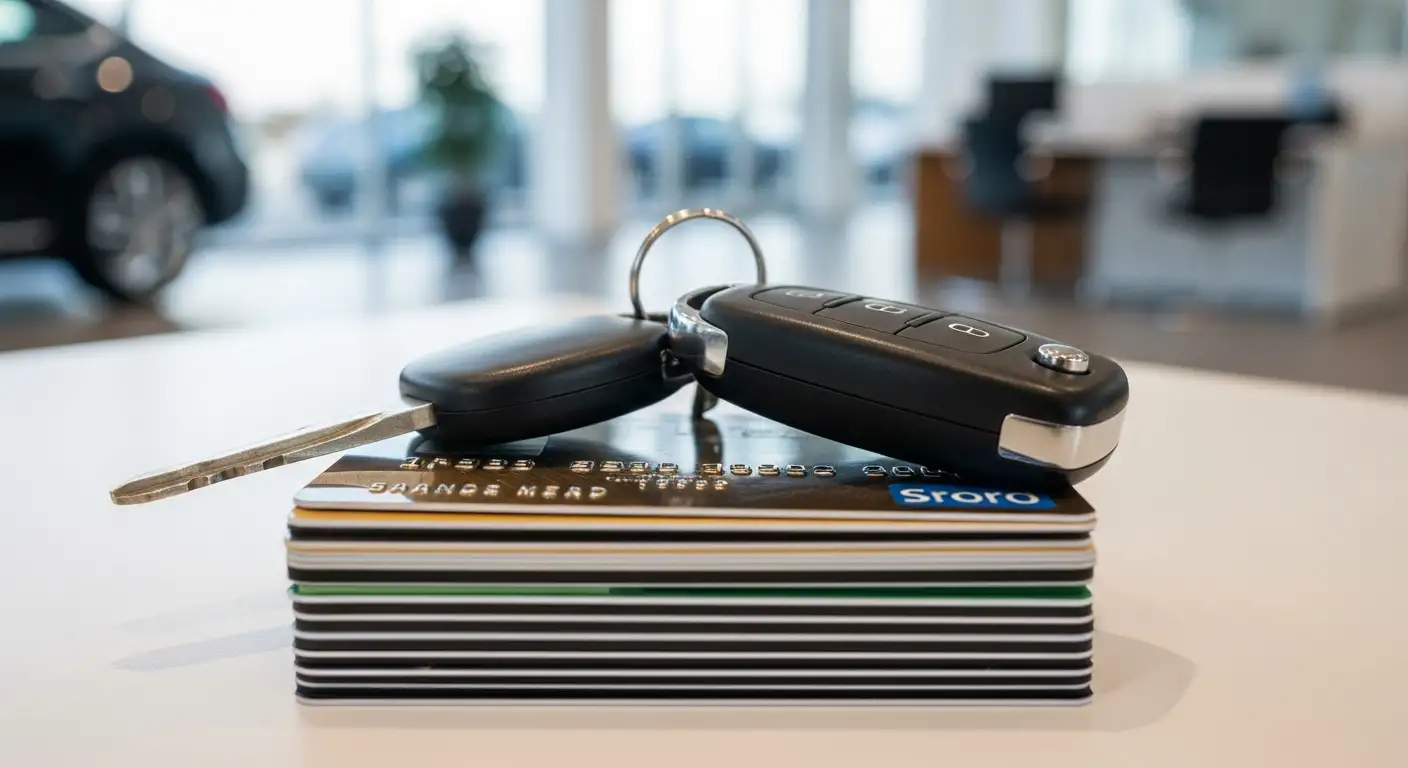
How Credit Score Affects Lease Terms
Credit scores influence every aspect of lease agreements, from approval to monthly payments.
How Does Credit Score Affect Lease Payments
Credit primarily impacts the money factor (lease interest rate), which directly affects monthly payments. Using Experian’s data, average payments by credit tier show dramatic differences[3]:
| Credit Tier | Average Monthly Payment | Premium vs. Super Prime |
|---|---|---|
| Super Prime (720+) | $586 | Baseline |
| Prime (660-719) | $643 | +$57 (9.7%) |
| Near Prime (620-659) | $719 | +$133 (22.7%) |
| Subprime (580-619) | $806 | +$220 (37.5%) |
| Deep Subprime (<580) | $931 | +$345 (58.9%) |
These differences compound over typical 36-month terms, creating thousands in additional costs.
What is a Money Factor on a Lease
The money factor represents your lease’s interest rate, expressed as a decimal for easier calculation. To convert to APR, multiply by 2,400. For example:
- Money factor 0.0015 = 3.6% APR
- Money factor 0.0030 = 7.2% APR
- Money factor 0.0050 = 12.0% APR
Money factors vary based on:
- Credit score (primary factor)
- Vehicle model and residual value
- Lease term length
- Market interest rates
- Dealer markup (negotiable)
Money Factor Bad Credit Impact
Bad credit dramatically inflates money factors. Current market examples[4]:
Tier 1 Credit (750+):
- Toyota: 0.00085 (2.04% APR)
- Honda: 0.00092 (2.21% APR)
- BMW: 0.00135 (3.24% APR)
Subprime Credit (600):
- Toyota: 0.00450 (10.80% APR)
- Honda: 0.00520 (12.48% APR)
- BMW: Not available (declined)
The difference between tier 1 and subprime money factors can add $150-300 to monthly payments on typical vehicles.
Additional Costs for Bad Credit Leases
Beyond higher money factors, bad credit triggers additional expenses throughout the lease process.
Higher Down Payment for Lease with Bad Credit
While good credit enables zero-down leases, bad credit typically requires substantial upfront payments:
- Cap cost reduction: $2,000-5,000 to lower monthly payments
- First month payment: Due at signing
- Acquisition fee: $595-1,095 (sometimes doubled)
- Documentation fees: $200-500
- Dealer markup: Often non-negotiable with bad credit
Total drive-off costs can reach $5,000-8,000 for subprime lessees—defeating leasing’s low-upfront-cost advantage.
Multiple Security Deposits Lease Requirements
Security deposits, refundable at lease-end assuming no damage, become mandatory with challenged credit:
- Standard requirement: 1 deposit equal to monthly payment
- Fair credit: 2-3 deposits
- Poor credit: Up to 9 deposits (maximum legal limit)
Multiple security deposits tie up thousands in capital for the lease duration, creating opportunity costs beyond stated payments.
High Interest Rate Car Lease Consequences
Elevated money factors create cascading financial impacts:
- Higher monthly payments reduce affordability
- Increased total cost may exceed purchase prices
- Negative equity if attempting early termination
- Limited refinancing options unlike purchased vehicles
- Reduced vehicle choice to maintain payment targets
When money factors exceed 0.0040 (9.6% APR), purchasing with financing almost always proves more economical.
How to Get Approved for a Car Lease with Bad Credit
Strategic approaches can improve approval odds despite credit challenges.
Lease a Car with a Co-Signer
Co-signers with strong credit can facilitate approval and better terms. Requirements typically include:
- Co-signer credit score 700+
- Proof of income covering lease payment
- Understanding of equal legal responsibility
- Willingness to be listed on registration
Co-signing carries risks for both parties—missed payments damage both credit profiles, and relationship strain often results from financial entanglements.
What to Bring to a Dealership to Lease
Preparation improves negotiating position. Essential documents include:
Financial Documentation:
- Last 2 pay stubs
- Previous 2 years’ tax returns
- Bank statements (3 months)
- Proof of residence
Credit Explanation:
- Letter explaining credit issues
- Documentation of resolved problems
- Evidence of current stability
Down Payment:
- Cashier’s check or verified funds
- Trade-in title if applicable
Comprehensive preparation demonstrates seriousness and can sway borderline decisions favorably.
Alternative Lease Strategies
Creative approaches can circumvent traditional lease barriers.
What is a One-Pay Lease
One-pay or single-pay leases involve paying all monthly payments upfront for significant discounts. Benefits include:
- Reduced money factor (often by 0.0010-0.0015)
- No credit check after initial approval
- Total savings of 5-10% versus monthly payments
- Simplified budgeting
Drawbacks include tying up $15,000-30,000 for the lease term and losing money if the vehicle is totaled early (GAP insurance doesn’t cover prepaid amounts).
Lease Takeover with Bad Credit
Assuming someone else’s lease through services like LeaseTrader or Swapalease can bypass traditional credit requirements. Original lessees desperate to exit may accept buyers with lower credit scores. Advantages:
- Shorter commitment (remaining lease term only)
- No down payment required
- Potential incentives from desperate sellers
- Lower credit requirements from banks
Verify all terms carefully—you inherit existing damage, mileage overages, and contract terms.
How to Improve Credit Score to Lease a Car
Strategic credit improvement can dramatically improve lease terms within months.
Credit Building Strategies for Leasing
Targeted improvements focusing on factors lessors prioritize:
Payment History (35% of score):
- Set all bills to autopay
- Catch up on past-due accounts
- Dispute any incorrect late payments
Credit Utilization (30% of score):
- Pay down credit cards below 30% of limits
- Request credit limit increases
- Avoid closing old accounts
Auto Loan History:
- Make extra payments on existing car loans
- Consider a small secured auto loan to build history
Remove Negatives:
- Negotiate pay-for-delete agreements
- Dispute inaccuracies aggressively
- Add positive tradelines as authorized user
Timeline for Credit Score Improvement
Realistic improvement timelines based on starting point:
| Starting Score | Target Score | Typical Timeline | Key Actions |
|---|---|---|---|
| 500-550 | 620 | 6-12 months | Resolve collections, establish payment history |
| 550-600 | 670 | 4-8 months | Pay down debt, dispute errors |
| 600-650 | 700 | 3-6 months | Optimize utilization, build history |
| 650-700 | 750 | 2-4 months | Fine-tune credit mix, maintain perfection |
Patience during improvement often yields thousands in savings versus rushing into unfavorable lease terms.
Lease vs. Finance with Bad Credit
Understanding when leasing makes sense versus buying helps optimize financial decisions.
Is It Easier to Get a Loan or a Lease with Bad Credit
Auto loans prove significantly easier to obtain with bad credit than leases. Key differences:
Auto Loan Advantages:
- Collateral (vehicle) reduces lender risk
- Subprime specialists abundant
- Down payment directly reduces loan amount
- Refinancing possible after credit improvement
- No end-of-term condition requirements
Lease Disadvantages:
- Lender retains ownership and depreciation risk
- Condition requirements create additional uncertainty
- No equity building to offset risk
- Limited subprime lease programs
Statistics confirm this: while 30.5% of auto loans go to subprime borrowers, only 13.91% of leases do[5].
Leasing vs Financing with Subprime Credit
Financial comparison for $25,000 vehicle with 600 credit score:
Lease Scenario:
- Monthly payment: $385
- Down payment: $3,000
- 36-month term
- Total cost: $16,860
- End result: No vehicle ownership
Finance Scenario:
- Monthly payment: $495
- Down payment: $3,000
- 60-month term
- Total cost: $32,700
- End result: Own $12,000 vehicle
Despite higher monthly payments, financing builds equity worth approximately $12,000, making it superior for subprime borrowers.
Is It Harder to Lease or Buy a Car
Leasing requires meeting stricter criteria beyond credit score:
- Stable residential history (2+ years)
- Consistent employment (1+ years)
- Lower debt-to-income ratios
- Clean insurance history
- No recent repossessions
Buying typically only requires proof of income and down payment, making it accessible to broader populations.
Bad Credit Auto Loan Alternatives
When leasing proves impossible, consider:
- Credit Union Financing: Member-owned institutions offer better rates
- Manufacturer Financing: Incentives on slow-selling models
- Buy Here Pay Here: Last resort with 20%+ interest
- Personal Loans: For older vehicles dealers won’t finance
- Peer-to-Peer Lending: Online platforms for non-traditional credit
Used vehicle purchases through established dealers often provide the best value for credit-challenged buyers.

Key Takeaways
- 670+ credit score minimum for realistic lease approval, 700+ for decent terms
- Average lease credit score is 753 in 2025, indicating high standards
- Money factors double or triple with bad credit, adding $150-300 monthly
- Only 14% of leases go to borrowers under 660 credit score
- Financing beats leasing for subprime borrowers due to equity building
- Credit improvement of 50-100 points can save thousands over lease term
- Co-signers and larger down payments improve approval odds but don’t eliminate premiums
Next Steps
Start by checking your credit scores from all three bureaus at AnnualCreditReport.com, focusing on your FICO Auto Score if available. If your score falls below 670, invest 3-6 months improving it before attempting to lease—the savings will far exceed the wait’s inconvenience.
For scores between 670-720, shop aggressively during model year-end clearances when dealers are most flexible. Contact multiple dealerships’ internet departments for pre-approval before visiting, as this reduces pressure and provides negotiating leverage.
If your score exceeds 720, you’re positioned well for leasing. Focus on negotiating money factors down from initial offers and comparing multiple brands’ incentives. Consider luxury brands like Audi or BMW during December sales events when lease support is strongest.
For those with sub-620 credit, pivot toward purchasing a reliable used vehicle with financing. Build credit through on-time payments, then revisit leasing once your score improves. The equity built during ownership will provide down payment funds for future leases or purchases.
Remember that credit improvement is achievable for everyone. Focus on consistent payments, reducing balances, and avoiding new credit applications. With patience and discipline, accessing favorable lease terms becomes realistic within 6-12 months for most consumers.
FAQs
What is the minimum credit score to lease a car?
Most lenders prefer 670+ FICO score for lease approval, though some accept 620+ with additional requirements like larger down payments and higher money factors.
Is it harder to get approved for a lease than a loan?
Yes, leasing typically requires better credit than buying since you’re borrowing the car’s depreciation without building equity, creating more risk for lenders.
Can I lease a car with a 600 credit score?
Possible but difficult with a 600 score; expect higher money factors adding $100+ monthly, larger down payments of $3,000+, and limited vehicle selection.
Can I lease a car with a 500 credit score?
Very unlikely through traditional channels with 500 credit; consider subprime auto loans for purchasing instead, or work on improving credit first.
What happens if I have bad credit and want to lease a car?
You’ll face higher monthly payments, larger required down payments, possible multiple security deposits, and limited vehicle options if approved at all.
How can I get approved for a lease with bad credit?
Use a co-signer with good credit, make a larger down payment, show stable income proof, or choose less expensive vehicles to improve approval chances.
Will a large down payment help me lease a car with bad credit?
Yes, a larger down payment reduces lender risk and can help secure approval with better terms despite poor credit, though it eliminates a key leasing advantage.
Can I use a co-signer to lease a car?
Yes, a co-signer with good credit (typically 700+) can help you qualify for better lease terms, though they assume equal responsibility for payments.
What is a “money factor” and how does my credit score affect it?
Money factor is the lease interest rate (multiply by 2400 for APR); lower credit scores result in higher money factors, increasing monthly payments significantly.
What credit score is considered “Tier 1” for leasing?
Typically 700-720+ FICO score qualifies as Tier 1, earning best available rates and terms with minimal down payment requirements.
Is leasing a good idea for someone with bad credit?
Generally no; buying used with financing often provides better value than high-cost subprime leases that don’t build equity.
What are the alternatives to leasing if I have bad credit?
Consider buying used with financing, lease takeovers from others, rent-to-own programs, or improving credit before attempting to lease for better terms.
References
- Experian. (2025). State of the Automotive Finance Market Q1 2025. https://www.experian.com/automotive/finance-market-report
- Capital One. (2025). Leasing a Car with Bad Credit Guidelines. https://www.capitalone.com/learn-grow/money-management/lease-car-bad-credit
- Experian. (2025). Average Auto Lease Payments by Credit Tier. https://www.experian.com/blogs/ask-experian/average-auto-lease-payment
- CarEdge. (2025). Current Money Factor Rates by Manufacturer. https://caredge.com/money-factors
- Equifax. (2025). U.S. National Consumer Credit Trends Report. https://www.equifax.com/credit-trends

I am a senior automotive analyst at Autvex. Expert vehicle evaluations, in-depth reviews, and objective analysis helping readers make informed automotive decisions with years of industry experience.

